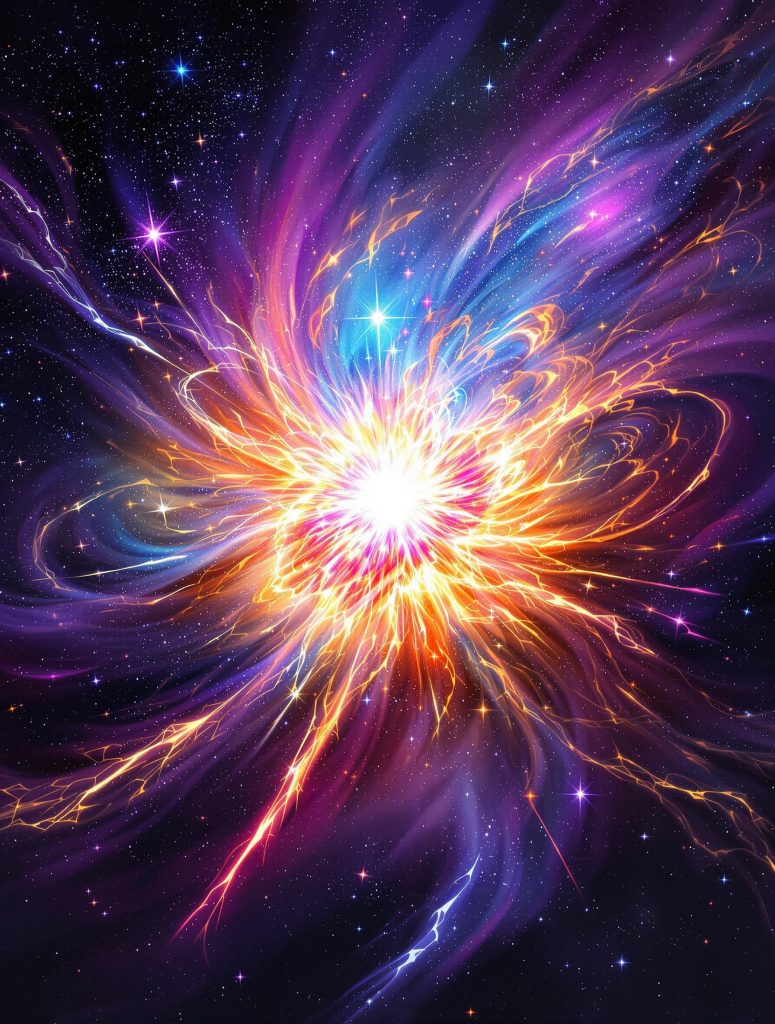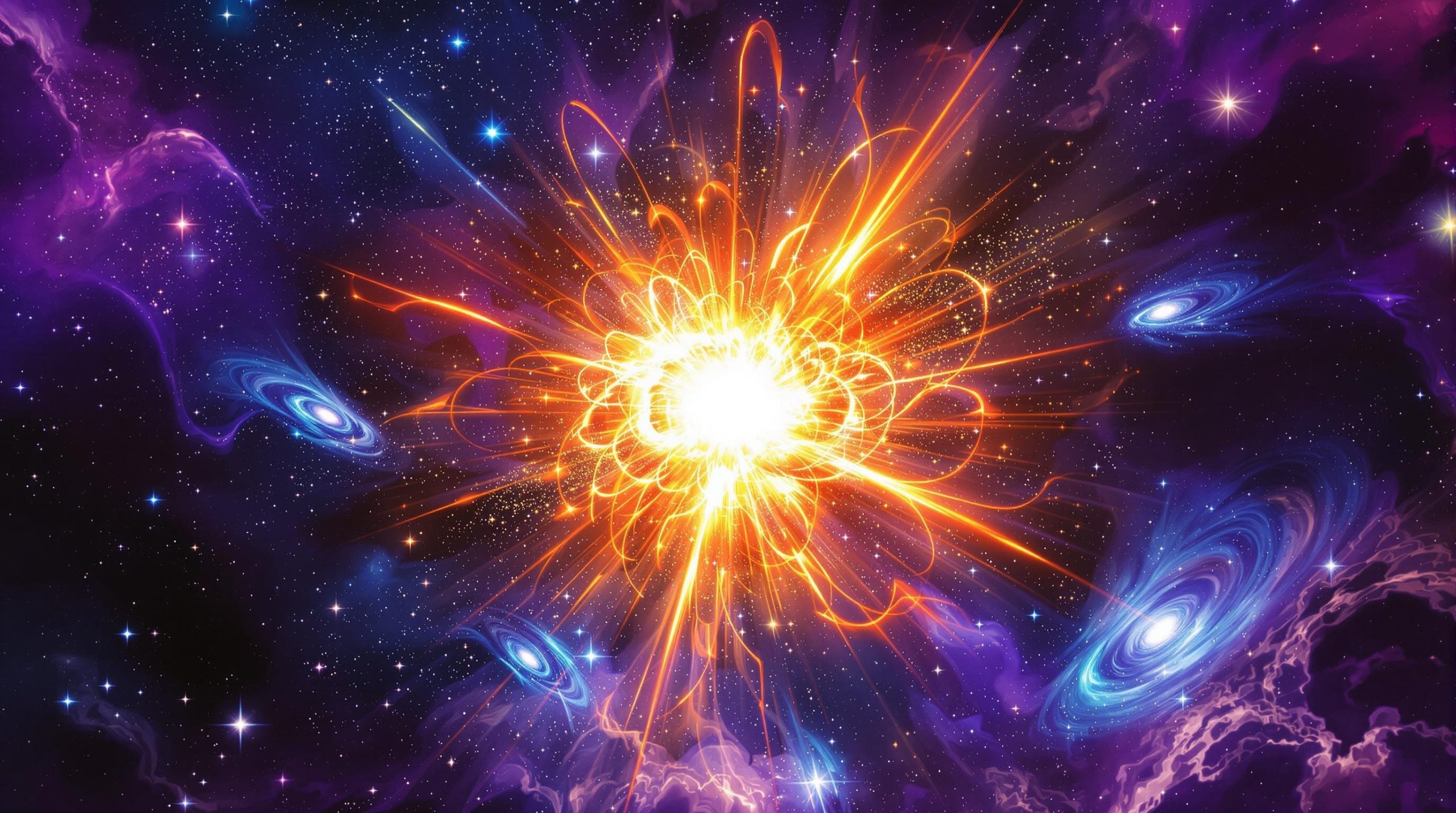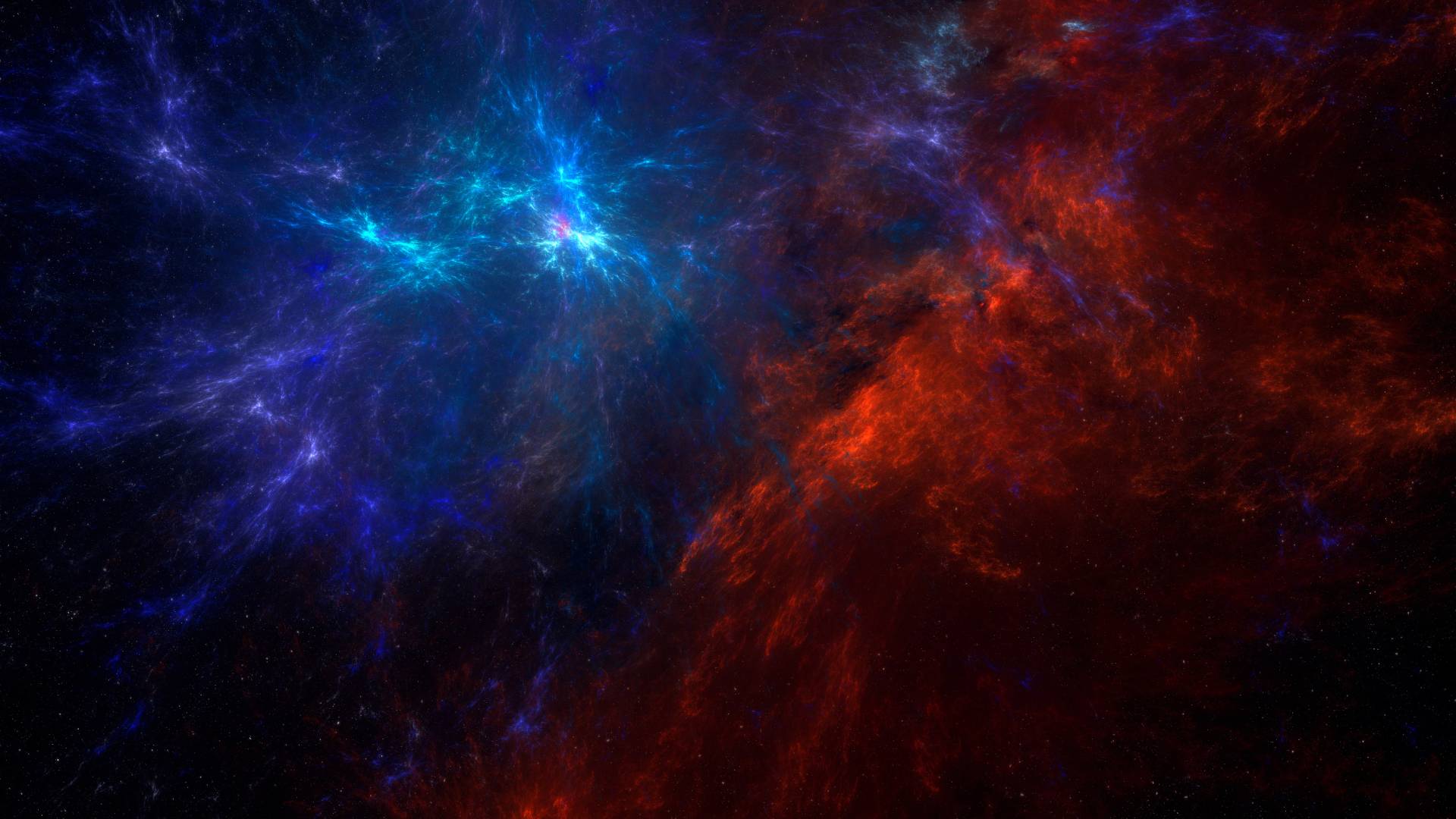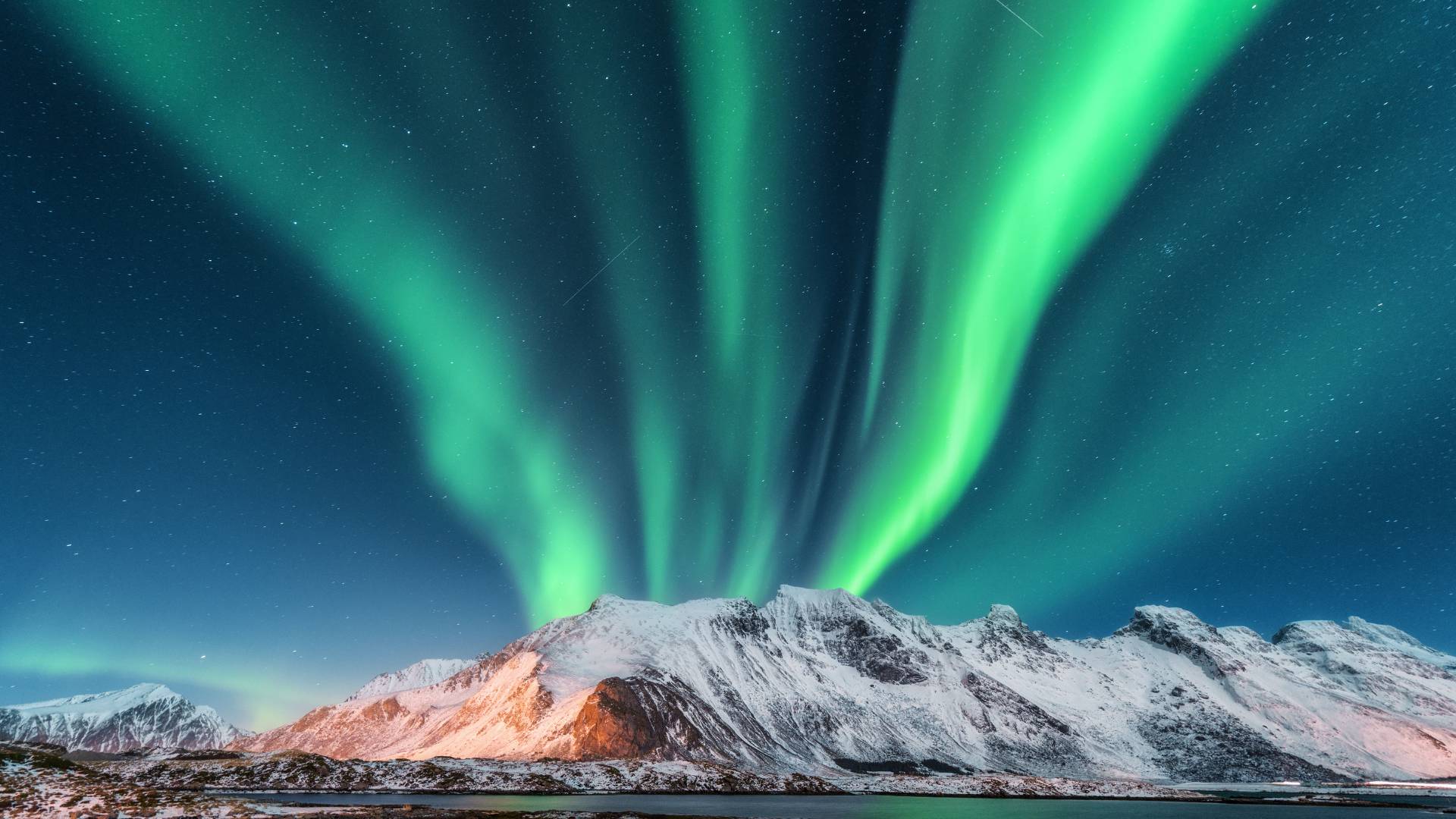The Big Bang Theory is the prevailing cosmological model that explains the origin and evolution of the universe. It posits that the universe began as an extremely hot, dense singularity approximately 13.8 billion years ago and has been expanding ever since. This theory not only describes the birth of the universe but also provides insights into its current structure, composition, and ultimate fate. The term “Big Bang” was originally coined by British astronomer Fred Hoyle during a radio broadcast in 1949, albeit somewhat mockingly, as he supported an alternative theory known as the Steady State Theory. stay with Spaceyv
The Origins of the Big Bang Theory
The conceptual foundation of the Big Bang Theory began with the application of Albert Einstein’s General Theory of Relativity to the universe as a whole. In 1927, Belgian priest and physicist Georges Lemaître proposed that the universe is expanding, deriving this from Einstein’s equations. He suggested that the universe originated from a “primeval atom,” an idea that closely resembles what we now understand as the Big Bang.
In 1929, American astronomer Edwin Hubble provided critical observational evidence for this expansion. By observing distant galaxies, Hubble discovered that they were moving away from us, and the farther they were, the faster they appeared to recede. This relationship, now known as Hubble’s Law, suggested that the universe is expanding uniformly, reinforcing Lemaître’s hypothesis.

Key Evidence Supporting the Big Bang Theory
- Cosmic Microwave Background Radiation (CMB): One of the most compelling pieces of evidence for the Big Bang Theory is the discovery of the Cosmic Microwave Background Radiation. In 1965, Arno Penzias and Robert Wilson detected this faint glow of microwave radiation permeating the universe. The CMB is considered the afterglow of the Big Bang, a remnant heat from the initial explosion that has cooled over billions of years to just 2.7 Kelvin above absolute zero.
- Abundance of Light Elements: The Big Bang Nucleosynthesis theory predicts the formation of the lightest elements during the first few minutes after the Big Bang. Observations of the proportions of hydrogen, helium, and lithium in the universe align closely with theoretical predictions, providing strong support for the model.
- Hubble’s Law and the Expanding Universe: The observation that galaxies are moving away from each other suggests that the universe is expanding. This expansion implies that, in the past, the universe was much smaller, denser, and hotter, consistent with the Big Bang model.
- Large-Scale Structure of the Universe: The distribution of galaxies and cosmic structures across the universe aligns with predictions from the Big Bang model. The slight fluctuations in the CMB correspond to the seeds of galaxies and clusters we observe today.
You can read more about : Why Is Pluto Not a Planet? The Story behind it
The Timeline of the Universe According to the Big Bang Theory
- The Planck Epoch (0 to 10^-43 seconds): The earliest moment after the Big Bang, where all fundamental forces were unified. Due to the extreme conditions, our current understanding of physics breaks down in this epoch.
- Inflationary Epoch (10^-36 to 10^-32 seconds): The universe underwent an exponential expansion, growing faster than the speed of light. This inflation smoothed out the universe and explains its large-scale uniformity.
- Quark Epoch (10^-12 seconds): The universe cooled enough for quarks and gluons to form. These quarks later combined to form protons and neutrons.
- Hadron Epoch (10^-6 seconds): Quarks combined to form hadrons, including protons and neutrons. The universe continued to cool, allowing more complex particles to form.
- Lepton Epoch: Leptons, such as electrons, dominated the universe, and neutrinos decoupled, moving freely through space.
- Photon Epoch: The universe became dominated by radiation. Photons interacted frequently with charged particles, keeping the universe opaque.
- Recombination (about 380,000 years): The universe cooled sufficiently for electrons and protons to combine into neutral hydrogen atoms. This decoupling of matter and radiation allowed photons to travel freely, creating the Cosmic Microwave Background.
- Dark Ages: A period before the formation of stars, where the universe was filled with neutral hydrogen and devoid of light sources.
- Formation of Stars and Galaxies (a few hundred million years): Gravitational attraction caused gas clouds to collapse, forming the first stars and galaxies, ending the cosmic dark ages.
- Present Day (13.8 billion years): The universe continues to expand, with galaxies moving apart and the rate of expansion accelerating due to dark energy.
You can Read More about : How does zero gravity work?
Challenges and Alternatives to the Big Bang Theory
While the Big Bang Theory is widely accepted, it is not without its challenges and alternatives. Some of the questions it struggles to answer include:
- What caused the Big Bang? The theory describes the evolution of the universe from a singular point but does not explain what initiated the event.
- What is dark energy and dark matter? While they make up most of the universe’s content, their exact nature remains a mystery.
- The Horizon Problem: Why is the universe so homogeneous in temperature when distant regions should not have been in causal contact? The inflationary model addresses this, but it’s still a topic of investigation.
- The Flatness Problem: The universe appears to be geometrically flat, requiring fine-tuned initial conditions.

Alternative theories, such as the Steady State Theory, cyclic models, and multiverse theories, attempt to address these gaps. However, none have garnered as much empirical support as the Big Bang Theory.
Conclusion
The Big Bang Theory remains the most robust and comprehensive explanation for the origin and evolution of the universe. Supported by extensive observational evidence, it provides a framework for understanding the cosmos’ past, present, and future. While there are still unanswered questions and areas for further research, the Big Bang Theory continues to be a cornerstone of modern cosmology, guiding scientists in their quest to unravel the mysteries of the universe.
References



